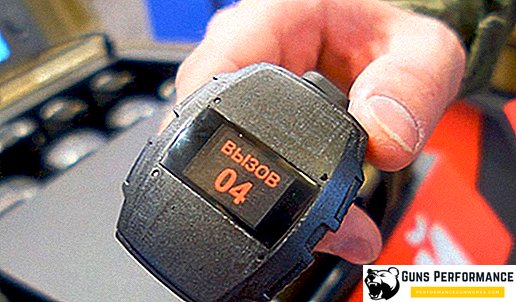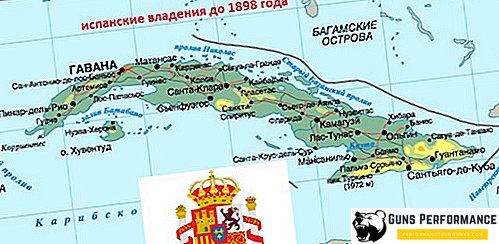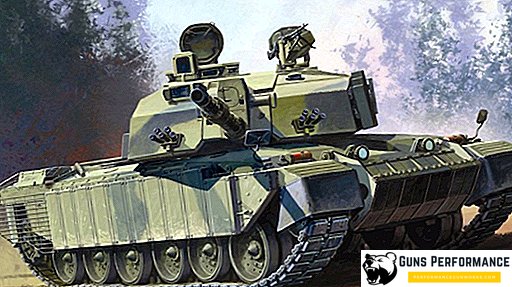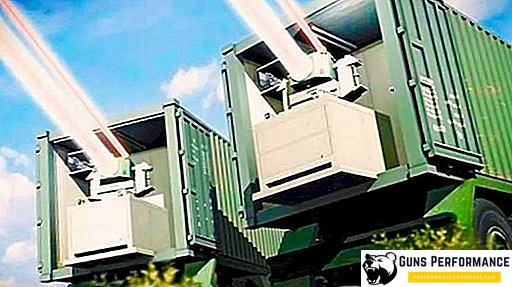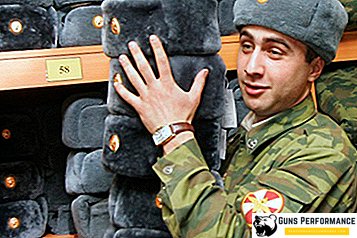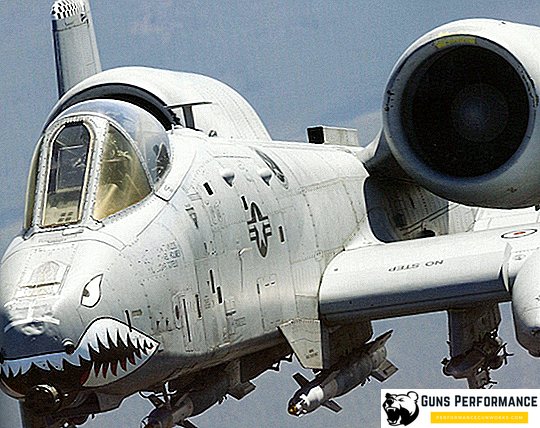
A-10 Thunderbolt II is an American single-seat armored attack aircraft, created in the mid 70s of the last century. Despite the rather respectable age, the A-10 Thunderbolt II attack aircraft is considered to be one of the best cars of its class in the world. The specialization of this vehicle is the destruction of enemy tanks and other armored vehicles.
It is currently the main ground support aircraft on the battlefield of the US Army. The attack aircraft received its name in honor of the legendary fighter-bomber of the Second World War period P-47 Thunderbolt. In the American army, he got a completely different nickname - Warthog, which means "Warthog".
Thunderbolt first flew into the sky in 1972, was put into service in 1977, and was modernized several times. The warthog's “finest hour” was the first Gulf War. It was this aircraft that destroyed the most armored vehicles of the Iraqi army. And if before the operation “Storm in the Desert” the US Air Force planned to get rid of the A-10, then after such a “combat debut” no one even stuttered about writing off the attack aircraft.
The most modern and "advanced" modification of the aircraft is the A-10C, it was put into service in 2007. In total, since the start of mass production, 715 aircraft have been manufactured. In 2018, 283 cars remained in service (A-10C). The cost of one A-10 Thunderbolt II attack aircraft is $ 11.8 million (for 1994).

A-10 Thunderbolt II Creation History
The A-10 Thunderbolt II owes its birth to the Vietnam War. In the early 1960s, Pentagon’s military strategists were intensely preparing for a future large-scale conflict with the Soviet Union, which at that time seemed almost inevitable. For this purpose, tactical strike aircraft in service (F-100, F-101 and F-105) were reequipped for delivering nuclear strikes at large and important enemy targets: at airfields, defense centers, railway stations. These expensive and sophisticated supersonic aircraft were not very suitable for direct support of troops on the battlefield.

The Vietnam War forced American generals to take a different look at front-line aviation. Due to the lack of a specialized vehicle, the Americans had to use the T-28 Troyan piston training aircraft, re-equipping it a bit and equipping it with bombs and unguided rockets. The first experience of using the T-28D was very successful. However, soon the Vietnamese partisans in large quantities began to appear Soviet machine guns DShK, after which the military career of "Troyan" ingloriously ended.
It became clear that for the destruction of small-sized targets on the battlefield, a specialized aircraft, well-protected by armor and possessing powerful weapons, is needed.
Around the same period, the situation changed in Europe. In the mid-60s, the tanks of the new generation (T-62 and T-64), armed with a powerful weapon and having high armor protection, began to enter into service with the army of the USSR and its allies. Motorized rifle units of the Soviet army mastered the new combat vehicle - the BMP-1. By its combat characteristics, this technique exceeded everything that the NATO member countries had at that time. In addition, the industry of the USSR was quite capable of adjusting its production in large quantities. It seemed that the terrible dream of the West about the Soviet "tank avalanche", capable of reaching the English Channel, began to come true, sweeping away everything in its path.
One more thing should be noted: the Soviet tank and motorized rifle divisions were reliably covered with the Shilka anti-aircraft installations, which showed their high effectiveness against American aircraft in Vietnam.
In the mid-60s in the United States began to create a full-fledged attack aircraft, the work was carried out as part of Project A-X. Very soon, the Americans came to the concept of the machine, largely repeating the German and Soviet attack aircraft during the Second World War - a simple, well-armored aircraft with subsonic flight speed.
In 1967, the conditions of the competition were sent to 21 US aviation companies. The US Air Force wanted to get a plane with a speed of at least 650 km / h, good maneuverability at low altitudes, with powerful cannon armament and a significant bomb load. In addition, the new attack aircraft had to have landing characteristics, allowing it to use ground airfields.
At that time, it was already clear that the United States was losing the Vietnam War, and the plane was conceived, above all, for the European theater of operations. In 1970, the most important event occurred, which largely determined the appearance and characteristics of the "Warthog": the leadership of the US Air Force determined the main type of attack aircraft gun. They were supposed to be a 30-mm rapid-fire gun GAU-8, made according to the Gatling scheme with a block of seven barrels.

When choosing a weapon, the successful experience of the use of 30-mm guns by the Israelis against Soviet tanks in 1967 was taken into account.
In 1970, the final stage of the competition for the development of a new attack aircraft began. Two companies reached the final: Northrop and Fairchild Republic. In May 1972, the prototype aircraft manufactured at Fairchild Republic, YA-9A, took off. Twenty days later, the first flight was made by the prototype YA-10A, presented by Northrop.
Comparative tests of both cars began in October 1972 at the Wright-Patterson airbase. It should be noted that both bidders turned out to be equal competitors: the YA-10A was superior to the opponent in maneuverability, and the YA-9A was more economical and easy to maintain. A-10 had a very original layout, dictated by the desire of designers to maximize the survivability of the machine. The layout of the A-9 was more classic, somehow it resembled the Soviet Su-25 attack aircraft.
In the end, in early 1973, the Fairchild Republic victory was announced, the company received an order to manufacture a batch of ten pre-production aircraft. The first of them took off in February 1975, the GAU-8 gun was mounted on it, which showed excellent results during the tests.

Serial production of the aircraft began at the end of 1975 and lasted until 1984.
In the US armed forces, attitudes toward the A-10 have been rather skeptical for a long time. He was criticized, even thought to replace the modification of the F-16. However, in 1990, Saddam Hussein sent his troops into Kuwaiti territory, and the following year, the famous “Desert Storm” began - the operation of a multinational coalition against Iraq.
To the surprise of many, it turned out that the clumsy and low-speed "Warthog" is great for supporting ground units and hunting for enemy armored vehicles. 144 A-10 took part in the hostilities, they made more than 8 thousand combat sorties, losing only seven cars. But the main thing is not even this: the Thunderbolts managed to destroy about a thousand Iraqi tanks, two thousand units of other armored vehicles and more than a thousand art installations. Such indicators could not boast of any other coalition aircraft, neither the flaunted F-16, nor the expensive stealth aircraft F-117. As a tool to fight enemy armor A-10 even surpassed the specialized Apache helicopter.
Thunderbolts were actively and fairly successfully used during NATO operations in the former Yugoslavia. Then there was the American operation in Afghanistan, during which the A-10 attack aircraft were based at the Bagram military airfield.
The A-10 Thunderbolt II attack aircraft was also used during the second Gulf War. In this operation, 60 A-10 aircraft took part, one of which was shot down, and several vehicles were seriously damaged.
The most modern modification of the attack aircraft is the A-10C, which was put into service in 2007. This aircraft is equipped with the latest electronic digital equipment, it can use high-precision ammunition and laser-guided weapons.

In 2018 Thunderbolts were stationed in Estonia.
A-10 Thunderbolt II is in service with only the US Army, it has never been exported. Although, talks about the possible supply of "Warthog" to the allies arose repeatedly. At various times, Japan, Israel, Great Britain, Germany, Belgium and South Korea expressed interest in A-10, but no deals were concluded. Few countries can afford the use of specialized attack aircraft, the use of multi-purpose aircraft is much cheaper.
One hour flight "Thunderbolt" is more than 17 thousand dollars. Americans plan to operate this car until 2028.
Description A-10 Thunderbolt II
The A-10 Thunderbolt II is a nizkoplan made in the normal aerodynamic configuration with two-tail vertical tail and a power plant consisting of two engines.
The fuselage of a semi-monocoque aircraft, in its front part is the cockpit, its shape and location provides the pilot with a good view forward, down and to the sides. The cockpit is closed with powerful titanium armor and made in the form of a bath; it is able to protect the pilot from 37 mm rounds. The ejection seat provides the evacuation of the pilot at any speed and altitude.

Motor nacelles of two turboprop engines are attached to the central part of the fuselage using special pylons. This arrangement of the power plant reduces the likelihood of foreign objects getting into the engines during take-off and landing, simplifies their maintenance, and also provides additional protection against fire from the ground. The engine exhaust gases pass over the stabilizer plane, which reduces the visibility of the A-10 in the thermal range. Such an arrangement of engines allowed to place the fuel tanks near the center of gravity of the aircraft and abandon the fuel transfer system.
"Thunderbolt" has a rectangular wing of a large area, which consists of a center section (34%) and two trapezoidal consoles. The wing of the aircraft is equipped with three-section Fowler flaps and ailerons. The shape and area of the wing allows the attack aircraft to actively maneuver at low speeds and carry a large payload.
The aircraft stabilizer has a rectangular shape and a rather large area (20% of the wing area), which provides the car with good maneuverability characteristics. At the ends of the stabilizer are placed two vertical keels with rudders. Such a tail assembly design increases the survivability of the aircraft: it can continue controlled flight if one of the fins and even one of the arms of the stabilizer is lost.
The A-10 Thunderbolt has a tricycle retractable landing gear with a front desk. All racks are unicycle, in the retracted state, they are somewhat protruding (about a third) beyond the fuselage lines, which facilitates the forced landing of the car. The A-10 chassis design allows the aircraft to use ground airfields.

The power plant of the attack aircraft consists of two engines General Turbine General Electric TF34-GE-100, each of which has a thrust of 4,100 kgf.
The A-10 is equipped with two independent hydraulic systems that provide the elements of wing mechanization, release and retract the landing gear, rotate the barrel of a 30-mm nose cannon.
Thunderbolt has a fire extinguishing system that uses inert gas freon to fight fire.
Electronic equipment A-10 can be called simple, compared with other American combat aircraft. The complex of on-board radio-electronic equipment includes: near and far navigation systems, a radio compass, a radio altimeter, a radio direction finder, an autopilot, an indicator on the windshield, an instrument landing system. The pilot has at his disposal several radio stations of different ranges, as well as a warning system for radar exposure.
Next to the nose landing gear is a target detection system, illuminated by a laser beam. It is able to detect objects at distances up to 24 km. Also on the attack aircraft can be installed container with EW equipment.

The A-10 Thunderbolt is armed with the most powerful 30 mm GAU-81A cannon, which is installed in the nose of the aircraft, almost on its axis of symmetry. The gun is made according to the Gatling scheme and has seven rotating shafts. Shells shells guns are made of aluminum, which significantly reduced the weight of ammunition. The total weight of the gun installation with ammunition is 1830 kg.
The gun GAU-81A has a hydraulic drive, a spineless ammunition supply system and a drum-type magazine. Shells cannon have plastic leading belts, which significantly increases the resources of the barrels. The pilot can set different rate of fire of the gun: from 2100 to 4200 (later the upper threshold was reduced to 3900) shots per minute. In real conditions, the pilot is usually limited to a few volleys lasting several seconds each. Otherwise, the barrel may overheat. In order not to damage the body of the aircraft, used liners are not thrown out, but are collected in the drum.
After the start of operation of the attack aircraft, it turned out that the powder gases get into the engines of the aircraft, gradually reducing their thrust. The drop in power was 1% for every thousand shots. To solve the problem, the power plant was equipped with a special system that “burned down” unburned powder particles.

The gun GAU-81A can fire two types of ammunition: high-explosive fragmentation projectiles and sub-caliber projectiles (BOPS) with a uranium core. Usually in the ammunition of the aircraft on one high-explosive ordnance accounts for three sub-caliber projectile. GAU-81A has a fairly high accuracy: at distances of 1220 meters, 80% of the ammunition fall into a circle with a diameter of 6 meters.
The Thunderbolt has 11 external suspension points (8 under the wings and 3 under the fuselage), on which free-fall bombs or guided weapons can be placed. The latter includes Maverick missiles (AGM-65A and AGM-65B) equipped with a television-guided homing vessel. They work on the principle of "shot and forget." The detection range of targets for these munitions is theoretically 11-13 km, but in practice, usually this distance does not exceed 6 km.

As a means of self-defense, the A-10 can use AIM-9 air-to-air missiles, and additional containers with Vulcan 20-mm cannons can be installed on the aircraft.
The creators of the A-10 attack aircraft paid much attention to increasing the survivability of the machine. The cockpit and the most important systems of the aircraft are armored, tanks and fuel lines are protected, Thunderbolt has a duplicated hydraulic system and manual control.
Project Evaluation
The A-10 Thunderbolt is no doubt one of the best aircraft in its class. Its main advantages include: high survivability, maneuverability, relatively low cost of the aircraft, high efficiency of onboard armament.

The survivability of the A-10 is really impressive: during the fighting in Iraq and the former Yugoslavia, aircraft returned to the base with a disabled engine, with a completely missing stabilizer, an inoperative hydraulic system and significant wing damage.



In 2003, the Thunderbolt attack aircraft was fired from the ground in the Baghdad area. He received more than 150 holes, but managed to reach the base with two non-working hydraulic systems. The pilot was not even injured.
It should be noted the high efficiency of aircraft weapons. The 30-mm cannon can hit or disable almost all types of armored vehicles existing today. Guided missile weapons are also very effective, although the A-10 has a tendency to conduct "friendly fire" on its own troops. But this, rather, can be explained by the general specifics of the attack aircraft, than by the flaws of the particular aircraft.
A-10 is often compared with the Soviet Su-25 attack aircraft. These machines were developed at about the same time, to perform similar functions. The Thunderbolt significantly surpasses the Su-25 in maximum combat load (7260 kg versus 4400 kg) and practical ceiling (13700 versus 7000 meters). True, the Su-25 has a slightly higher speed.
If we talk about weapons, the mass of the 30-mm A-10 cannon surpasses that of the GS-2-30 mounted on the Su-25. In addition, the use of sub-caliber ammunition significantly increases the effectiveness of firing at armored targets.

A-10 Thunderbolt II Features
| Wingspan, m | 17,53 |
| Aircraft length, m | 16,26 |
| Airplane height, m | 4,47 |
| Wing area, m2 | 47.01 |
| Weight, kg | |
| empty aircraft | 11610 |
| normal takeoff | 14865 |
| maximum takeoff | 22200 |
| Fuel kg | 4853 |
| engine's type | 2 TRD General Electric TF34-GE-100 |
| Max. speed, km / h | |
| on high | 834 |
| on the ground | 706 |
| Cruising speed, km / h | 634 |
| Practical range, km | 3949 |
| Fighting radius, km | 463-1000 |
| Practical ceiling, m | 13700 |
| Crew | 1 |


